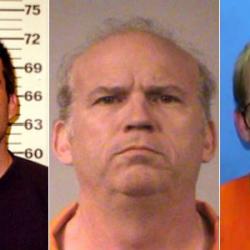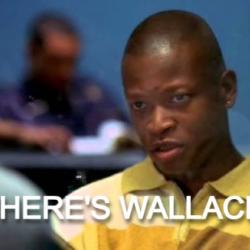The Fort Worth Star-Telegram has done some very impressive and important reporting in its long special report on sexual abuse and cover-ups in independent fundamental Baptist churches across the country. The scope, scale, and particulars of the widespread abuses they uncover are heartbreaking and enraging. Sarah Smith and the other reporters and editors who worked on this deserve great credit and gratitude.
This series needs to be widely read but, unfortunately, the Star-Telegram’s short-sighted, inflexible paywall will prevent that from happening. The number of articles in the multi-part series exceeds the number of free articles non-subscribers are permitted to read each month. And the paper’s paywall won’t allow you to reload any given article, meaning that you’ve got to get all the way through some very long reads in one go. If your reliably unreliable Comcast wifi cuts out, or if your screen-saver kicks in, the paywall will prevent you from finishing the article.*

At Christianity Today, Kate Shellnut offers a short, helpful summary of the Star-Telegram’s horrifying findings, along with some reporting on how the independent fundamentalist Baptist community is responding to its revelations (not well). See her report here: “Hundreds Accuse Independent Baptist Pastors of Abuse.”
Shellnut is also helpful in clarifying just who these “independent fundamentalist Baptists” are:
Around 2.5 percent of Americans identify as independent Baptists, according to the Pew Research Center — more than belong to the Assemblies of God, Churches of Christ, or Episcopal and Anglican churches. Yet independent Baptists, by design, are less familiar to outsiders than other Christian traditions.
For one, they lack a unified presence since individual churches largely operate on their own. The label can be used by a range of autonomous, Bible-believing Baptists (fundamental being a reference to the core doctrines of the Christian faith). Independent fundamental Baptist churches include those loosely affiliated in fellowships — more common in the North — as well as those whose pastors may share particular networks—more common in the South — Central Baptist Theological Seminary professor Kevin Bauder told Quick to Listen for the CT podcast’s explainer on such churches. …
Perhaps the most well-known Independent Fundamentalist Baptists today are the Duggars, the quiverfull family made famous by the reality show 19 Kids and Counting. Though not all in the movement look the same, the Duggars showcase several theological and cultural distinctives common among independent fundamental Baptists: adhering to strict biblical inerrancy, usually based exclusively on the King James Version (KJV); homeschooling; abstaining from pop culture as entertainment; and dressing modestly.
It surrenders far too much to allow that “fundamental” refers to “the core doctrines of the Christian faith.” The fundamentals of fundamentalists are mainly not that at all, but rather a host of relatively recent “doctrinal” innovations, such as inerrancy. KJV-onlyism is certainly not a “core doctrine of the Christian faith” for any Christian who doesn’t speak English. And it was, of course, wholly absent among Christians before 1611. Young-earth creationism, premillennial dispensationalism, and fervent support for segregation are also not “core doctrines” that could be found among Christians before the 19th century or anywhere outside of IFB’s parochial American context.
Shellnut also draws on Messiah College historian John Fea’s description of these independent fundamentalist Baptists, so let’s turn to that. “Hundreds of Sex Abuse Allegations Found in Fundamentalist Baptist Churches,” Fea wrote, following the Star-Telegram’s report. Having studied this group in particular, he provides some excellent background:
The independent fundamentalist Baptist movement emerged sometime in the 1940s as an attempt to continue the legacy of the fundamentalist movement of the 1920s. It upheld what it believed to be the true spirit of fundamentalism amid changes in the conservative Protestant landscape.
Much of this movement was a response to the so-called “neo-evangelical” movement. When in the 1940s and 1950s former fundamentalists such as Billy Graham, Carl F.H. Henry, John Harold Ockenga and others sought to separate themselves from the label “fundamentalist” and seek out a more irenic, culturally-engaged version of conservative Protestantism, some descendants of the original fundamentalist movement of the 1920s were not very happy about it. They believed that the neo-evangelical emphasis on cultural engagement with the world, and especially liberal or mainline Protestants, was a mark of unhealthy compromise that would eventually undermine true biblical faith in America.
Pastors of large churches and leaders of fundamentalist institutions such as Bob Jones, John R. Rice, and Jack Hyles still identified with the label “fundamentalist.” … This movement was characterized by a staunch commitment to biblical orthodoxy filtered through the King James Bible, an adherence to “second-degree separation” or that idea that Christians must separate themselves from both unbelievers (“the world”) and fellow conservative Protestants who did not separate sufficiently enough from unbelievers (Billy Graham and the rest of the neo-evangelicals fell into this second category), and a propensity for strong white preachers who ran independent congregations that were not accountable to denominations.
For a sense of what this second-degree or double-separation means, think of Bob Jones’ dismissive definition of an evangelical: “Someone who says to a liberal: ‘I’ll call you a Christian if you call me a scholar.'”
(And since we’ve mentioned Bob Jones twice now, we should also mention that he was — above all else — a white supremacist. The central role of white supremacy — explicit and implicit — in the independent fundamentalist Baptist movement deserves more study and more insight than I can easily provide. Remove that variable from the equation and you’ll never arrive at the form or content of IFB fundamentalism as it currently exists. These other distinctions, distinctives and emphases all serve, in varying degrees, as proxies for that.)
This bit from John Fea is particularly helpful:
While neo-evangelicals read periodicals like Christianity Today, fundamentalist Baptists read John R. Rice’s The Sword of the Lord. While neo-evangelicals sent their kids to Wheaton College or Fuller Theological Seminary, fundamentalist Baptist kids went to Bob Jones University or Pensacola Christian College. Jerry Falwell, the founder of Liberty University, came out of this tradition, but he was quickly disowned by his fellow separatist Baptists when he decided to get involved in politics. During the 1970s and 1980s, Falwell seemed to operate in a space somewhere between the independent Baptist world of his upbringing and the neo-evangelicalism of Billy Graham and Christianity Today.
That “space between” he describes as the world of Jerry Falwell has grown over the years. Much of what we think of as the “religious right” would fall into that murky space in between old-school fundamentalism and the “mainstream” evangelicalism of Billy Graham et. al.
The church I grew up in dwelt somewhere in that space. It was an independent church, and it was fundamentalist, and Baptist, but it was not an IFB independent fundamentalist Baptist church. It started as part of the Northern Baptist convention but, concerned about creeping liberalism in that association, split away to join the Conservative Baptists. A bit later, concerned about creeping liberalism in that association, it split away to join the GARB (the General Association of Regular Baptists — no, really, that’s a thing). A bit later — can you guess where this is going? — concerned about creeping liberalism in that association, it opted to go it alone.
A few members of that church were hard-core, old-school fundies. They sent their kids to Bob Jones and Pensacola — the only choices permitted to them. They attended Bill Gothard seminars and proudly embraced that whole creepy business. But these folks were seen as a little bit too much by most of the people in the church, whose kids got to choose places like Philadelphia College of the Bible or Northeastern Bible College. Or their kids just went to Rutgers, but with the assurance that they would be faithful members of a Campus Crusade chapter there. (Not the “liberal” InterVarsity, mind you, Campus Crusade.)
And while we only memorized verses in the King James Version — and lots of them — and used the KJV in Sunday services, we were also allowed and even encouraged to read the NIV and other more accessible translations. When I joined the junior high youth group, they even gave me a Living Bible (the one with the “cool” denim cover and the stick-figure illustrations).
We were, I suppose, fundamentalist with evangelical highlights. We were in that same “space somewhere between” fundamentalism and CT-style evangelicalism that Jerry Falwell Sr. found himself in.
I have no research or data to support this, but my sense is that this space between is growing and becoming ever more the center of gravity for white evangelicalism as a whole. Note how Jerry Falwell Jr. and Liberty University no longer identify as “fundamentalist,” but as “evangelical” — and note how this assertion is accepted, unquestioned, by other evangelicals. Other Christians who were once, or who would once have been, clearly a part of the fundamentalist camp — Al Mohler, Ken Ham, David Barton, etc. — are now routinely included as simply “evangelicals.” I’m not sure what this means, exactly, but I think it means something.
– – – – – – – – – – – –
* This paywall nonsense is unnecessary, counter-productive, and really disrespectful of the paper’s investigative team. More importantly, it’s disrespectful to the victims who bravely came forward to share their stories with reporters from the Fort Worth paper. Most of those victims don’t live in Fort Worth. Like the millions of others around the country who need to read these stories, they won’t be able to unless they subscribe to a newspaper hundreds of miles from where they live.
Get your act together, Star-Telegram senior staff. Exempt this special report from your paywall. Your reporters deserve better management than this.












